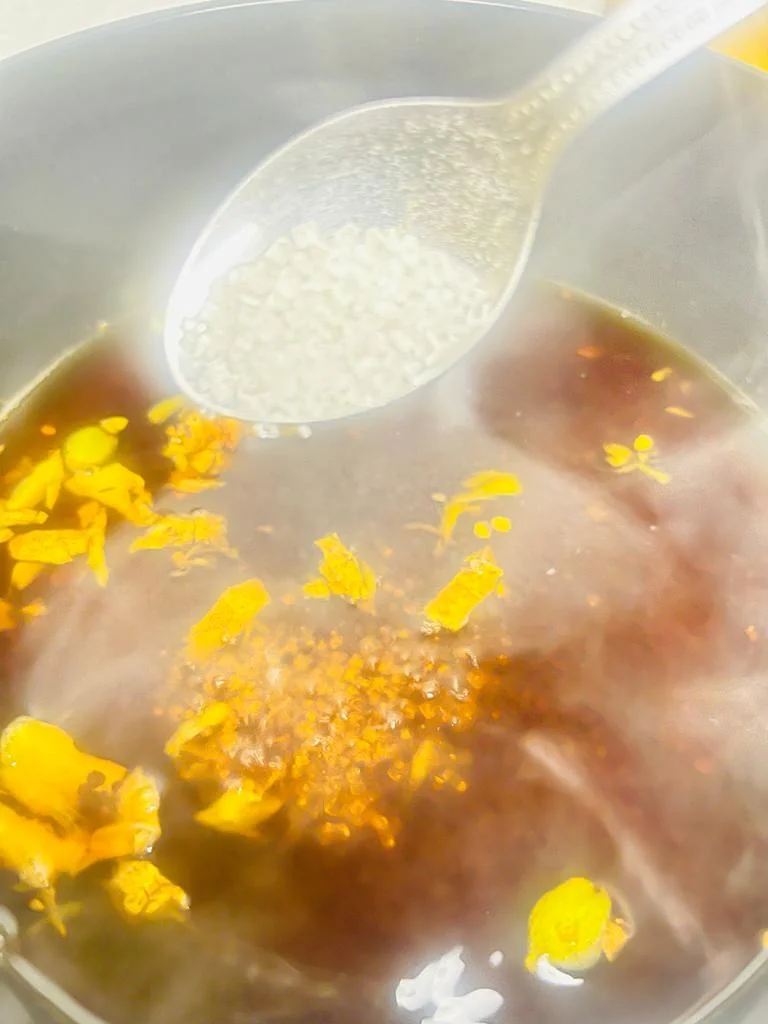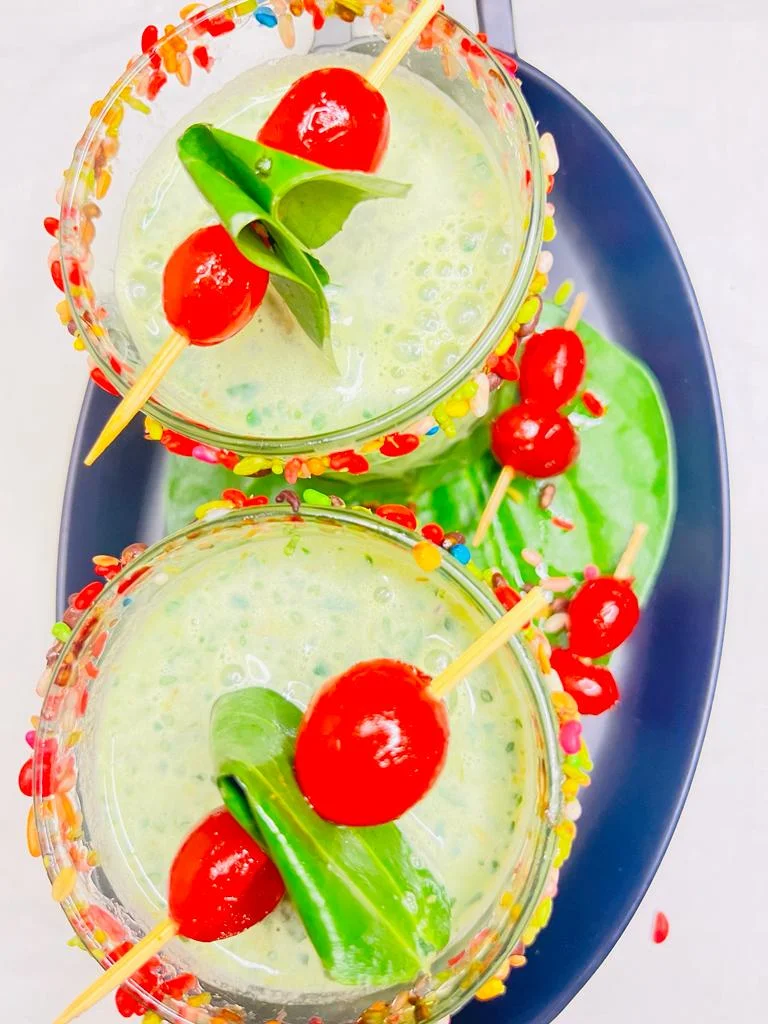Easy Cutting Chai Recipe | Mumbai Cutting Tea Recipe
In India cutting chai is a popular term used to refer to a small serving of tea, usually half a cup. The term “cutting” originated from the practice of dividing a regular cup of tea into two smaller portions, effectively “cutting” the quantity. This type of tea is commonly consumed at tea stalls, roadside vendors, and small cafes across the country.
The cutting chai culture is particularly prevalent in Mumbai, where it has become an integral part of the city’s bustling street life. Mumbai’s fast-paced lifestyle and crowded streets make cutting chai a convenient and refreshing option for people on the go. It serves as a quick pick-me-up and a source of rejuvenation amidst the daily hustle and bustle.
The preparation of cutting chai involves boiling loose tea leaves, milk, water, and spices such as ginger, cardamom, and cinnamon. The tea is simmered for a longer duration compared to regular tea, which allows the flavors to infuse fully. Once brewed, the chai is poured into small glasses or cups and often accompanied by crispy biscuits or snacks like pav bhaji, paneer pakore, chili potato etc.
The popularity of cutting chai can be attributed to its affordability, accessibility, and the social aspect associated with it. It provides a budget-friendly option for tea enthusiasts who want a quick dose of tea without having to consume a full cup. It also serves as a gathering point for people from different walks of life, fostering conversations and camaraderie.
Cutting chai has become more than just a beverage; it has evolved into a cultural symbol, representing the vibrant street life and the unique spirit of Indian cities. It reflects the essence of community, conversation, and shared experiences that are integral to the Indian way of life.
Whether enjoyed during a break from work, as a part of morning breakfast, or during lively conversations with friends, cutting chai continues to be cherished by millions of people across India. Its distinct flavor, affordable nature, and social significance have made it an enduring favorite in the diverse tapestry of Indian tea culture.
How to make Cutting Chai
Cutting chai, a popular beverage in India, is a delightful and refreshing way to enjoy a small serving of tea. This guide will take you through the step-by-step process with pictures and video of making cutting chai at home.
- Initially take dori danda and put 3 cardamoms & 1-inch ginger in it. Beat these ingredients well.

- Now take a saucepan or small pot and add 1 cup water and beated ginger and cardamoms to it. Place it on the stove over medium heat and bring the water to a boil.

- Once the water starts boiling, add 1 teaspoon of loose tea leaves to the saucepan. You can adjust the quantity based on your preferred strength of the tea.

- Afterwards add 2 teaspoons sugar or as per taste.

- Lower the heat to a gentle simmer and allow the tea and spices to infuse for a few minutes. This will help develop rich flavors.
- After the tea has steeped, add 1 cup of milk to the saucepan. The usual ratio is 1 part milk to 4 parts water, but you can adjust it according to your taste.

- Stir the mixture gently and continue simmering for a few more minutes until it reaches your desired consistency. Be careful not to let it boil over.

- Stir well to dissolve it completely into the chai.
- Once the cutting chai is ready, strain it into small glasses or big picture mug or cups to remove the tea leaves and spices. This will ensure a smooth and enjoyable drinking experience.

- Serve the cutting chai hot and savor its aromatic flavors. It pairs well with snacks like samosas, or pav bhaji or biscuits.

Few more similar recipes for you!
Masala chai is a spiced tea that offers a delightful combination of flavors. To make it, follow the steps for cutting chai but add a masala spice blend. The masala typically includes crushed ginger, cardamom pods, cinnamon sticks, cloves, and black peppercorns. Add these spices to the boiling water along with the tea leaves and simmer until fragrant. Then proceed with adding milk, sugar, and straining before serving. Masala chai is known for its warming and aromatic qualities.
Adrak Chai (Ginger Tea):
If you love the invigorating taste of ginger, try making adrak chai. Follow the basic cutting chai method but add grated or crushed ginger to the boiling water. Allow the ginger to infuse its flavors into the tea. You can adjust the amount of ginger based on your preference for a mild or intense ginger flavor. Strain the tea, add milk and sugar, and serve hot. Adrak chai is especially popular during cold weather or as a soothing remedy for a sore throat.
Elaichi Chai (Cardamom Tea):
Elaichi chai is a fragrant and aromatic tea infused with the flavors of cardamom. To prepare it, crush a few cardamom pods to release the seeds, and add them to the boiling water with the tea leaves. Let it simmer to allow the cardamom flavors to develop. Proceed with adding milk, sugar, and straining before serving. Elaichi chai is known for its distinctive and soothing taste.
Kulhad Chai:
Kulhad chai refers to tea served in small earthenware cups known as kulhads. The process of making kulhad chai follows the same steps as cutting chai, but the tea is traditionally brewed directly in the kulhads. The porous nature of the earthenware enhances the flavor and adds a unique earthy note to the tea. Once the tea is ready, it is poured directly into the kulhads and served hot. Kulhad chai is commonly enjoyed during monsoons and adds an authentic touch to the tea-drinking experience.
Expert Tips
Quality Tea: Choose good quality loose tea leaves for the best flavor. Opt for Assam or Darjeeling tea, which are known for their rich and robust flavors.
Water-to-Milk Ratio: Adjust the ratio of water to milk based on your preference. If you prefer a stronger tea flavor, increase the proportion of water. For a creamier texture, increase the amount of milk.
Spice Infusion: Experiment with different spices to personalize your cutting chai. Add a pinch of freshly grated ginger, a few crushed cardamom pods, or a stick of cinnamon to infuse delightful flavors into your tea.
Simmering Time: Allow the tea and spices to simmer for a few minutes to ensure the flavors are fully extracted. Be careful not to overboil the mixture, as it can result in a bitter taste.
Sweetness Level: Adjust the amount of sugar based on your taste preferences. Start with a small amount and gradually add more if needed. You can also use alternative sweeteners like honey or jaggery for a different flavor profile.
Straining Technique: When straining the cutting chai, use a fine-mesh sieve or a tea strainer to remove any tea leaves or spices. This will result in a smooth and enjoyable drinking experience.
Serving Temperature: Cutting chai is traditionally served hot. Pour it into small glasses or cups and serve immediately to enjoy the optimal flavors and aromas.
Pairing with Snacks: Cutting chai is often enjoyed with snacks like biscuits, pakoras, or samosas. Experiment with different snacks to find your favorite combinations and create a well-rounded tea-time experience.
Experiment and Customize: Feel free to experiment with the ingredients and ratios to create your perfect cup of cutting chai. Adjust the strength, sweetness, and spiciness to suit your taste buds and enjoy the process of discovering your unique chai blend.
FAQs
Q:What is the origin of cutting chai?
A:Cutting chai originated in India, particularly in Mumbai (formerly known as Bombay). It emerged as a convenient and affordable option for tea lovers who wanted a smaller serving of tea.
Q:Why is it called “cutting” chai?
A:The term “cutting” in cutting chai refers to the practice of dividing a regular cup of tea into two smaller portions. It is believed to have been named so because the tea is “cut” or divided in half.
Q:Where can I find cutting chai?
A:Cutting chai is commonly found at tea stalls, roadside vendors, and small cafes in India, particularly in Mumbai. It is an integral part of the city’s street culture and is readily available in many bustling areas.
Q:What are the typical ingredients used in cutting chai?
A:The basic ingredients for cutting chai include loose tea leaves, water, milk, and sugar. Optional ingredients can include spices like ginger, cardamom, or cinnamon, which add flavor and aroma to the tea.
Q:How is cutting chai different from regular chai?
A:Cutting chai is typically served in smaller portions, usually half a cup or less, whereas regular chai is served in a full-sized cup. Cutting chai is often stronger in flavor and more concentrated due to the reduced quantity.
Q:Can I customize the flavors of cutting chai?
A:Yes, cutting chai can be customized to suit your taste preferences. You can adjust the strength of the tea, sweetness level, and even experiment with different spices to create your desired flavor profile.
Q:Can I make cutting chai at home?
A:Absolutely! Making cutting chai at home is fairly simple. You’ll need tea leaves, water, milk, sugar, and optional spices. By following the steps mentioned earlier, you can easily prepare cutting chai in your own kitchen.
Q:What are some popular snacks to enjoy with cutting chai?
A:Cutting chai is often paired with snacks like pakoras (deep-fried fritters), samosas (savory pastries), or vada pav (a popular Indian street food). These snacks complement the flavors of cutting chai and enhance the overall tea-time experience.
Q:Is cutting chai only consumed in Mumbai?
A:While cutting chai is commonly associated with Mumbai, it is also popular in other parts of India. Many cities and towns across the country have their own versions of cutting chai, each with its own regional variations.
If you like this recipe then try our Other Tea Recipes
Please be sure to rate this recipe or leave a comment below if you have made it. For more vegetarian & non – vegetarian inspirations, Sign Up for my emails or follow me on Instagram, Youtube, Facebook, Twitter or Pinterest.
Cutting Chai Recipe Card
Equipments
Ingredients
- 1 cup Water
- 1 teaspoon Tea powder/tea leaves
- 2 tablespoons Sugar/as per taste
- 1 cup Milk
- 1 inch Ginger grated
- 3 Green Cardamoms/ ½ teaspoon green cardamom powder
Instructions
- Initially take dori danda and put 3 cardamoms & 1-inchginger in it. Beat these ingredients well.2. Now take a saucepan or small pot and add 1 cup water and beated ginger and cardamoms to it. Place it on the stove over medium heat and bring the water to a boil.3. Once the water starts boiling, add 1 teaspoon of loose tealeaves to the saucepan. You can adjust the quantity based on your preferred strength of the tea.4. Afterwards add 2 teaspoons sugar or as per taste.5. Lower the heat to a gentle simmer and allow the tea and spices to infuse for a few minutes. This will help develop rich flavors.6. After the tea has steeped, add 1 cup of milk to the saucepan. The usual ratio is 1 part milk to 4 parts water, but you can adjust it according to your taste.7. Stir the mixture gently and continue simmering for a few more minutes until it reaches your desired consistency. Be careful not to let it boil over.7. Stir well to dissolve it completely into the chai.8. Once the cutting chai is ready, strain it into small glasses.Your Cutting Chai is ready
Video
Notes
- Optional spices like ginger, cardamom, or cinnamon can be added for additional flavor.









Best beverage with breakfast. So quick recipe to make. Thanks North Indian Kitchen
Thanks for your feedback. We are very glad that you like our recipes.